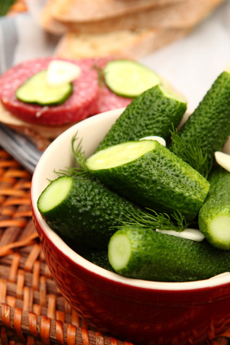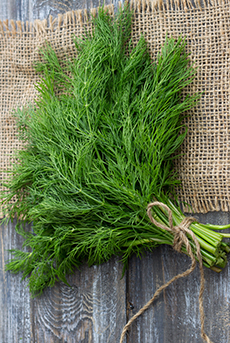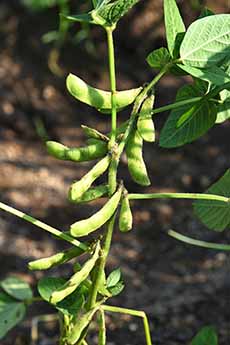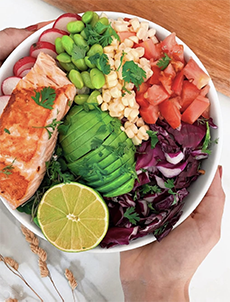|
May 25th is National Wine Day: a day to try something new. Have you had Vinho Verde lately (pronounced VEEN-yo VAIR-day, Portuguese for green wine, i.e. young wine)?
A green wine is one released from three to six months after the grapes are harvested. They may be red, white or rosé, and they are usually consumed soon after bottling.
These wines are meant to be enjoyed young, typically within two to three years of the vintage date. Unlike many wines that improve with age, these fresh, vibrant wines will not.
The wine doesn’t have a green tint; “green” is an industry term that refers to a wine’s youthful, fresh character.
It’s a summer standard—great for the outdoors, from patio to pool to picnic. It’s a perfect sipping wine and apéritif.
Just remember that it needs to be served well-chilled, ideally between 45°F-50°F. The crispness and gentle effervescence becomes more pronounced at lower temperatures.
> The history of Vinho Verde is below.
> So are food pairings.
> The year’s red wine holidays.
> The year’s white wine holidays.
WHAT IS VINHO VERDE?
Vinho Verde comes from the Minho region in northwestern Portugal, a lush, mountainous area known for its abundant rainfall and granite soils.
In fact, the Vinho Verde D.O.C. (Controlled Denomination of Origin) is Portugal’s largest wine region (photos #9 and #10).
This terroir produces light, crisp wines with naturally high acidity and lower alcohol content—typically ranging from 8.5% to 11.5%, compared to the 12%-15% found in most other wines.
The white wines are a pale straw color with bright acidity, subtle fruit flavors, and often a subtle effervescence that’s more of a light tickle on the tongue than the pronounced bubbles you’d find in sparkling wines (some producers do make fully sparkling wines).
The slight tickle is called frizzante, and it’s from residual carbon dioxide retained from fermentation. It gives the wine a lively character.
The white Vinho Verde wines are made from indigenous Portuguese grape varieties including Alvarinho, Loureiro, Trajadura, Arinto, and Azal. Many producers create blends using several of these grapes.
And the prices are great!
Entry level wines ($8-$12), which are widely available in the U.S., include brands like Casal Garcia, Gazela, and basic Aveleda bottlings. Despite the low prices, quality is generally reliable since the D.O.C. regulations require standards to be maintained.
Mid-range wines ($12-$18) include premium bottlings from established producers like Quinta da Aveleda’s reserve wines, better Broadbent selections, and some single-estate wines. They deliver more complexity and concentration.
Premium-range wines ($18-$30) showcase single-varietal Alvarinho wines instead of blends. These wines deliver greater depth, structure, and aging potential—Vinho Verde at its highest level. Look for producers like Anselmo Mendes, and Quinta de Santiago, and Quinta do Soalheiro.
Ultra-premium wines ($30-$60) are Alvarinho wines from renowned producers or special vineyards. Often from old vines or exceptional vintages, these bottles are in limited supply. If you see one, grab it and let it age to experience the region’s ability to produce serious contenders that maintain their essential character.
Red Vinho Verde
It’s easy to think of red Vinho Verde as a new style, but red wines were actually produced in the region long before the whites. In fact, red grapes dominated the region from the beginning of Vinho Verde production.
In medieval times, the region’s farmers primarily grew red grape varieties like Borraçal, Espadeiro, and Vinhão. These wines were the everyday table wines for local consumption—light, acidic, and meant to be drunk young with simple meals.
The shift toward white Vinho Verde began in the mid-20th century as export markets developed. International consumers had greater interest in crisp white wines, leading many producers to replant their vineyards with white grape varieties.
Today, red Vinho Verde is somewhat of a specialty product, readily available within Portugal but limited in export.
International availability is much more limited.
Brands like Aphros, Aveleda and Quinta da Raza appear sporadically. Red Vinho Verde is lighter than most red wines and not as universally appealing as the white versions.
Other Green Wines
Green and green-style wines from other areas include:
France: Muscadet from the Loire Valley.
Germany: Kabinett Riesling from the Mosel.
Italy: Frascati from Lazio.
Italy:Vermentino from Liguria and Sardinia.
Spain: Txakoli (chah-ko-LEE) from the Basque region.
What all green wines have in common is their emphasis on freshness over power, food compatibility over standalone complexity, and immediate drinking pleasure over aging potential.
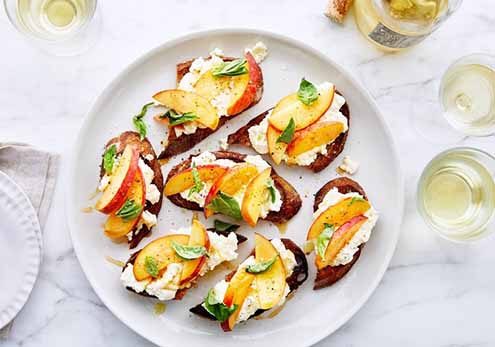
[11] For casual sipping, serve fruit, seafood, or vegetable crostini with Vinho Verde. Here, fresh peach slices top ricotta (photo © Good Eggs).
VINHO VERDE & FOOD PAIRINGS
Vinho Verde’s crisp acidity and light body make it very food-friendly.
The wine’s natural acidity cuts through rich foods.
subtle fruit flavors enhance lighter fare.
In addition to Portuguese fare, pour a glass with American favorites:
Seafood Pairings
Anything grilled, from swordfish to sardines.
Anything raw: ceviche, clams and oysters on the half shell, poke, sushi/sashimi, tiradito.
Fritters: crab cakes, salmon cakes, salt cod fritters.
Seafood salads: octopus salad, salmon/salmon Caesar.
Smoked fish: particularly salmon or trout.
Summer Salad Pairings
Put citrus, herbs, or mild cheeses in your salad, such as:
Arugula salad with lemon vinaigrette.
Caprese salad with fresh basil.
Escabeche.
Niçoise salad.
Shrimp Louie.
Thai salads (glass noodle salad, green papaya salad, spicy shrimp salad); Vietnamese grilled shrimp vermicelli salad.
Appetizer/First Course Pairings
Bruschetta.
Gazpacho.
Vietnamese spring rolls.
Cheese Pairings
Vinho Verde is an ideal pairing with fresh, mild varieties like burrata, goat cheese, mozzarella, and ricotta.
The wine’s acidity complements the milky flavors and creamy textures without overwhelming their delicate freshness.
THE HISTORY OF VINHO VERDE
The origins of wine in the region date to the Roman era, when vineyards were first established in this verdant area between the Minho and Douro rivers.
However, the distinctive wine-making style we recognize as Vinho Verde began to emerge during the medieval period.
By the 12th century, local farmers had adapted their viticulture to the region’s unique climate and topography, learning to work with the terroir: the granite soil, abundant rainfall, the cool breezes from the Atlantic Ocean, and so forth.
The wine’s naturally high acidity and lower alcohol content made it ideal for daily consumption by working people, and wouldn’t impair farm laborers during their workday. (Remember that beer and wine were drunk because water sources were often contaminated.)
Vinho Verde In The 20th Century
The 20th century brought significant changes that made improvements in the wine.
Traditional grape varieties like Azal and Pedernã gradually gave way to higher-quality varieties like Alvarinho and Loureiro.
Modern winemaking techniques replaced rustic methods. The wine’s original slight effervescence—a byproduct of incomplete fermentation—became a deliberately choice.
In 1908, the Minho region (image #9) was legally demarcated, making it one of Portugal’s first officially defined wine regions.
The Comissão de Viticultura da Região dos Vinhos Verdes was created in 1949 to oversee quality and authenticity. Vinho Verde became a protected designation of origin (denominação de origem controlada, or D.O.C.) in 1984.
The wine’s international reputation grew significantly in the latter half of the 20th century, particularly as global wine markets opened to Portuguese exports:
Following the 1974 Carnation Revolution military coup that toppled the Estado Novo, a fascist dictatorship, and ushered in a period of transition to democracy.
Subsequent admission to the E.U. in 1986.
Today, Vinho Verde is one of Portugal’s most successful wine exports, along with Espumante, Madiera, and Port.
|
|

[1] Vinho Verde, a light, refreshing white wine, is a perfect pairing with summer seafood. Here’s the recipe for these mussels in white wine sauce (photo © Eyre Peninsula Seafoods.

[2] Salmon crudo with Vinho Verde (photo © Bordeaux Magazine).

[3] Quinta da Aveleda produces one of the most widely available and reliable Vinho Verdes, a classic example of the style with bright citrus notes and gentle effervescence (photos #3 an #4 © Grapes and Grains).

[4] Casal Garcia is another classic and affordable Vinho Verde. The entire category is approachable without breaking the bank.

[5] single-varietal Alvarinho wines from producers like Quinta do Soalheiro or Anselmo Mendes showcase the complexity within Vinho Verde, offering more concentrated flavors while maintaining the style’s characteristic freshness.

[6] Hop on the high-end tinned seafood trend to present a mini-buffet with Vinho Verde (photo © Foods & Wines From Spain).

[7] Vinho Verde is a quality companion to sushi, sashimi, crudo, and poke (photo © Lognetic | iStock Photo).

[8] Whatever your seafood of choice, serve it with Vinho Verde (photo © The Palm | Facebook).

[9] The Minho region of Portugal, home to Vinho Verde D.O.C., is in the northwest portion of Portugal (photos #9 and #10 © Rimontgó Wineries).

[10] Close-up on the sub-regions.
|
